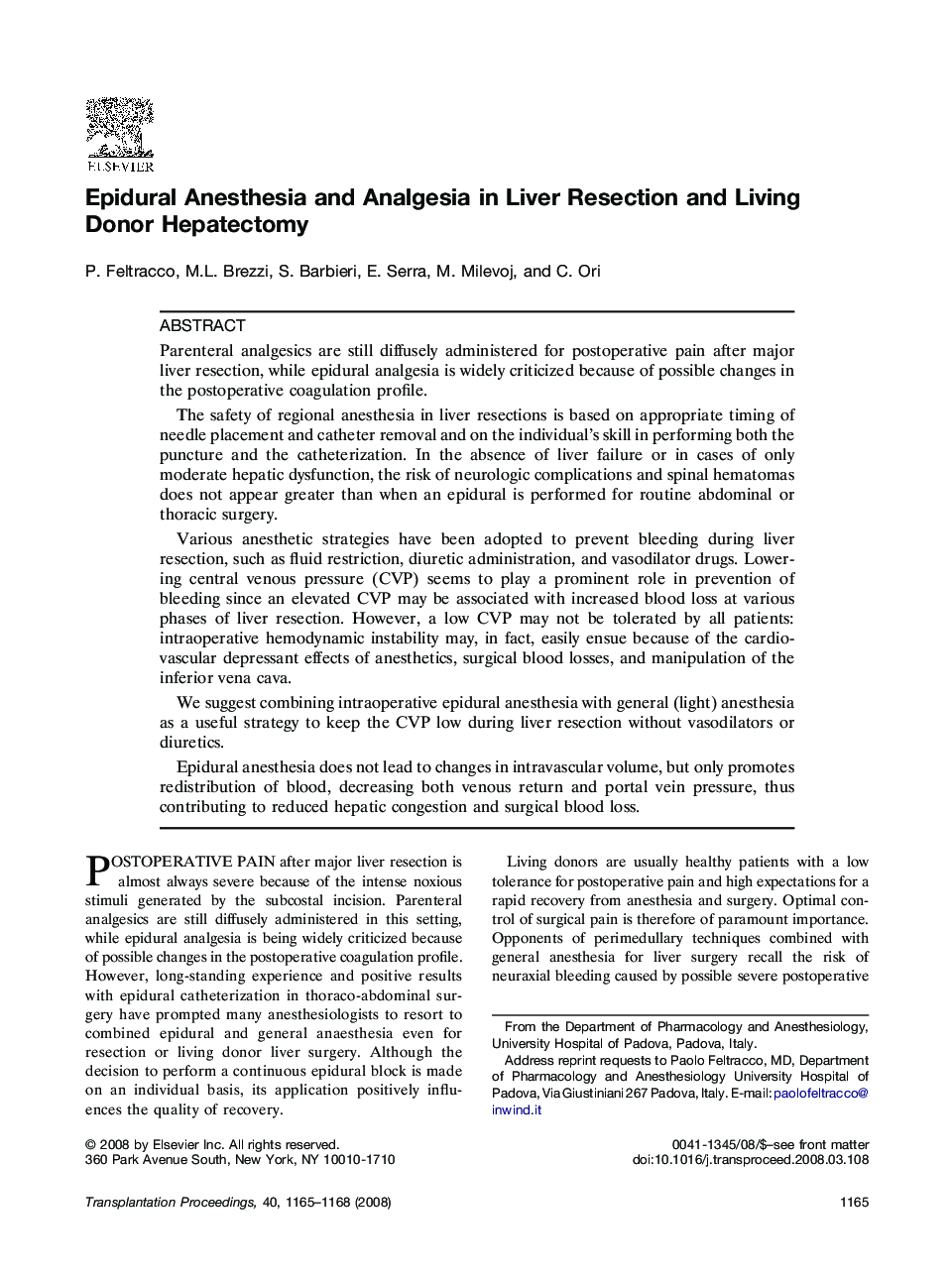| Article ID | Journal | Published Year | Pages | File Type |
|---|---|---|---|---|
| 4262131 | Transplantation Proceedings | 2008 | 4 Pages |
Parenteral analgesics are still diffusely administered for postoperative pain after major liver resection, while epidural analgesia is widely criticized because of possible changes in the postoperative coagulation profile.The safety of regional anesthesia in liver resections is based on appropriate timing of needle placement and catheter removal and on the individual's skill in performing both the puncture and the catheterization. In the absence of liver failure or in cases of only moderate hepatic dysfunction, the risk of neurologic complications and spinal hematomas does not appear greater than when an epidural is performed for routine abdominal or thoracic surgery.Various anesthetic strategies have been adopted to prevent bleeding during liver resection, such as fluid restriction, diuretic administration, and vasodilator drugs. Lowering central venous pressure (CVP) seems to play a prominent role in prevention of bleeding since an elevated CVP may be associated with increased blood loss at various phases of liver resection. However, a low CVP may not be tolerated by all patients: intraoperative hemodynamic instability may, in fact, easily ensue because of the cardiovascular depressant effects of anesthetics, surgical blood losses, and manipulation of the inferior vena cava.We suggest combining intraoperative epidural anesthesia with general (light) anesthesia as a useful strategy to keep the CVP low during liver resection without vasodilators or diuretics.Epidural anesthesia does not lead to changes in intravascular volume, but only promotes redistribution of blood, decreasing both venous return and portal vein pressure, thus contributing to reduced hepatic congestion and surgical blood loss.
